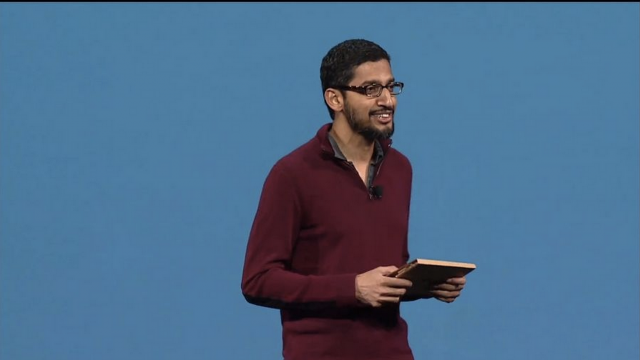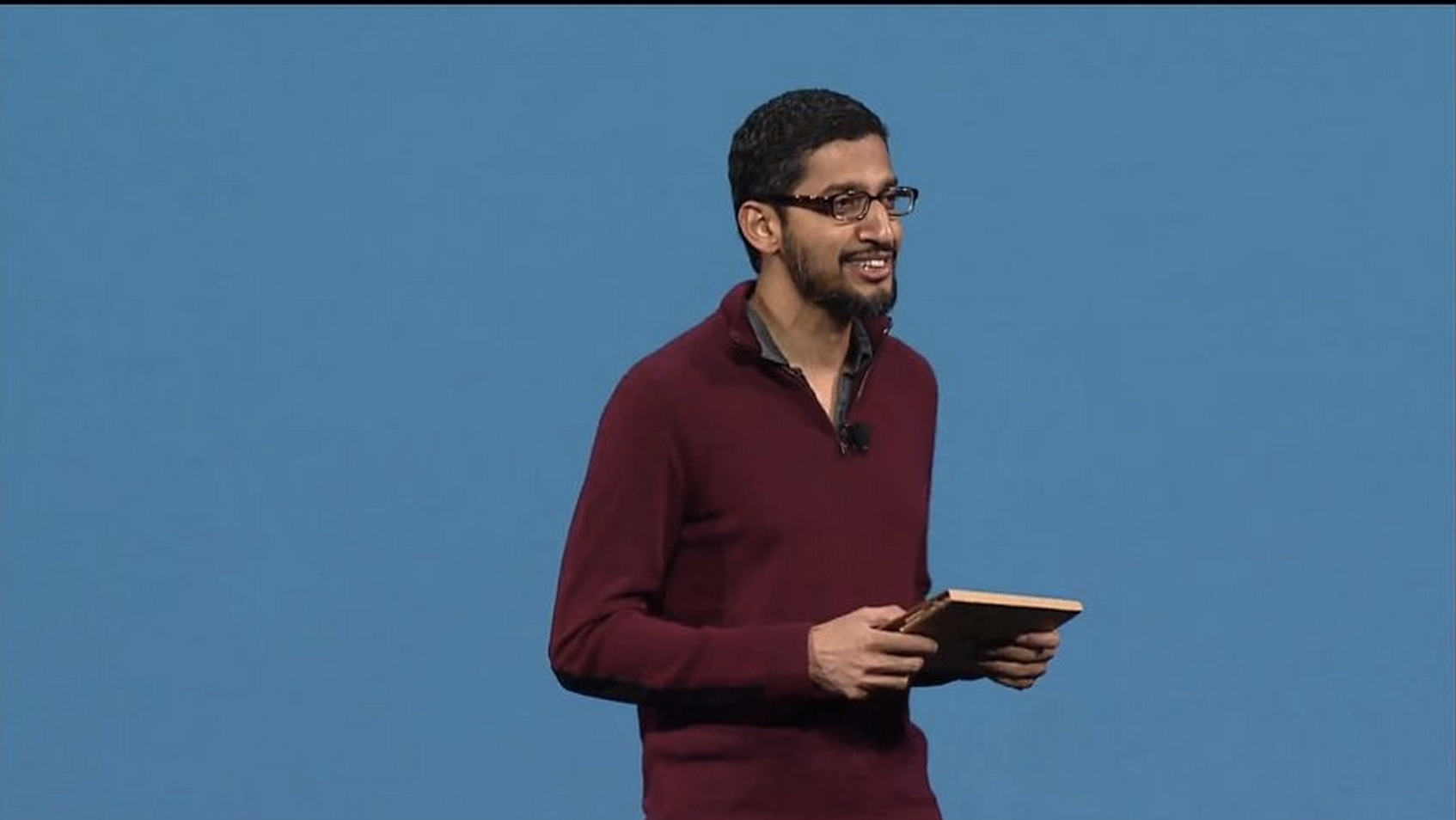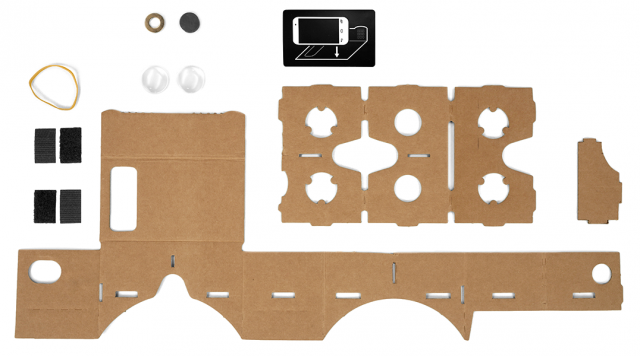
At the end of the Keynote speech this morning, Sundar Pichai gave a small wrap-up which included a list of the goodies that I/O attendees would be receiving – either an LG G Watch or Samsung Gear Live, and a Moto 360 when released. He also said they would receive a piece of cardboard … a very special piece of cardboard designed by some Googlers in their 20% time. It turns out the cardboard is a pre-cut foldable VR-Headset designed to be used with Android phones.
Cardboard is Virtual Reality on the cheap. Or to put it in Google’s words :
We want everyone to experience virtual reality in a simple, fun, and inexpensive way. That’s the goal of the Cardboard project.
To begin using Cardboard, you’ll need to make sure you have a compatible Android phone. Google says that Cardboard works with the Google Nexus 4 and 5, Motorola Moto X, Samsung Galaxy S4 and S5, Samsung Galaxy Nexus and is partially compatible with the HTC One, Motorola Moto G and Samsung Galaxy S3. Cardboard requires Android 4.2 and an NFC chip. Once you have that together you will need the Cardboard Android app from Google Play.
Once you’ve ensured your phone is compatible, gather some fairly rudimentary parts, which are listed on the Cardboard website :
- Cardboard :
Corrugated cardboard sheet, preferably E Flute (corrugated cardboard comes in a variety of thicknesses called “flutes”), available at many art supply stores and online . For best results, you should look for strong, thin cardboard (sturdy shoe box rather than moving box). Minimum size: 8.75in (22cm) by 22in (56cm), and 0.06in (1.5mm) thickness. Online sources here and here. - Lenses :
This is the trickiest component. Lenses that have a 40mm focal distance should work. Biconvex lenses work best because they prevent distortion around the edges. We used the Durovis OpenDive Lens Kit available here (US) and here (EU). - Magnets :
One neodymium ring magnet – like this or this – and one ceramic disk magnet – like this or this. Approximate size: 0.75in (19mm) diameter and 0.12in (3mm) thickness. - Velcro :
Two strips of regular strength adhesive-backed velcro. Approximate size: 0.75in (20mm) by 1.25in (30mm). - Rubber band :
One rubber band, to prevent the phone from sliding out. Minimum length of 3.2in (8cm). - NFC tag (optional) :
One sticker NFC tag. Program it with the URL cardboard://v1.0.0
You’ll also need a ruler, glue, and scissors, an X-acto knife, or access to a laser cutter.
Once you build your headset, and load the app, you will find that there are only limited experiences. But cardboard is an experimental platform and Google want you to build your own experiences to share. They have included developer documentation on the Cardboard website for you to code your own experiences. But if you’re a passive user and just want to check it out the experiences you can have with Cardboard include:
- Earth Flyover
Fly through a set of 3D places in Google Earth - Street View Tour
Be guided through a historical site - YouTube
Watch popular YouTube videos on a giant screen
- 3D Object Viewer
Interact with 3D objects - Photo Sphere Viewer
View your own personal photo spheres - 360 Video Viewer
Experience an immersive 360 degree video - Windy Day
An immersive 3D animation. Follow the mouse on his adventure.
Now, you’re a little lazy, you can probably put it together, but finding the parts sounds like a chore, a team at DodoCase have assembled the parts and will send them to you for USD$42.95 including shipping (slightly more if you want an NFC tag), also use the code ‘BXDD7282’ for 10% off.
It sounds like fun. A little expensive if you choose to get it sent to you, but if you want to find the parts yourself, it’s a cheap bit of fun. Can’t wait to try it out.






Can they sell it on the store please 😛
They must be using recycled cardboard now as the price has dropped to $24.95
You forgot shipping.
and it only costs $18 😉
Plans and app to let folks build a stereoscope viewer out of cardboard and certain Android devices.
I wonder if there are any plans on how to adapt an old GAF ViewMaster for the job?